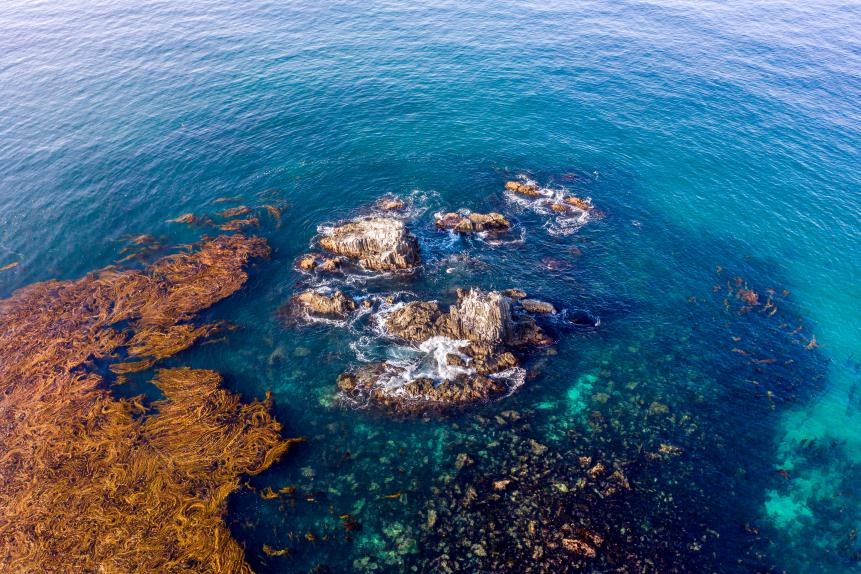
LL28
Drone Images of Coastal Kelp Show Recovery is Possible
California’s coastal kelp forests could be making a welcome revival. Drone images show seaweed beds recovering along the north coast in Mendocino and Sonoma counties.
Environmental group Nature Conservancy’s aerial surveys of the region have seen encouraging signs of growth that could play an important part in the fight against climate change.
Kelp, a brown macroalgae, is important to the health of marine environments as it supports a huge variety of species including whales, seals, all types of fish, sea birds, sea snails, and other invertebrates. But it also helps tackle global warming because it absorbs the greenhouse gas carbon dioxide through photosynthesis.
Kelp forests had receded by more than 95 percent in the area since 2013, due in part to disease and higher sea temperatures. An explosion in purple sea urchins, carpeting the seafloor and eating any vegetation in their path, then stripped an area that once was thriving with seaweed.

joebelanger
An aerial drone image of Seal Rocks in Laguna Beach, CA.
Sunflower sea stars, the urchin’s primary predator, experienced an epidemic of wasting disease in 2013 that wiped out their numbers and allowed the urchins to thrive. Bull kelp then virtually disappeared from 350km (220 miles) of California coastline between 2014 and 2019.
Nature Conservancy started surveying kelp using aerial drones in 2019. Pictures shot at 400 feet (120m) revealed the kelp forest canopy area at each of their survey sites had increased on average from one acre in 2019 to more than five a year later.
Local biologists and ecologists reported continued bull kelp growth in 2021. But that recovery may need to be helped along using conservation teams that clear urchins by hand to stop the barrens from returning. It would also restore kelp’s role in combating climate change.
Photosynthesis allows the plant to store carbon dioxide (CO2) as biomass. Its phenomenal growth rate, growing inches in a single day, allows it to soak up CO2 quickly. When the plant dies its carbon is then buried underwater in the soil. In this and other ways, coastal ecosystems can sequester three to five times more carbon than similar size tropical forests.

Parofoice
Aerial view of kelp beds in ocean Malibu, California. Shot with a drone, this shows a view from above of kelp beds and forests.
Globally, macroalgae like kelp have been estimated to lock up 200 million metric tons of CO2 every year in the ocean's depths – as much as New York State’s annual emissions. One study found that farming seaweed in just 3.8 percent of California’s waters could neutralize the state’s entire agricultural CO2 emissions.
Innovation entrepreneurs want to stretch that potential even further by farming kelp to tackle global CO2 emissions. XPrize winning company Pull to Refresh believes kelp can store one trillion metric tons, enough to reverse climate change. Critics ask what impact that would have on marine ecosystems or whether it would be released back into the atmosphere, but the method could prove to be invaluable.
These ‘blue carbon’ projects are gaining in popularity. Rewilding the oceans using farmed kelp can be done without chemicals or fertilizer and boosts local fish stocks. Projects underway include the Port of Seattle’s bid to restore eelgrass and kelp beds, creating eight acres of kelp forest to remove and store CO2.


















